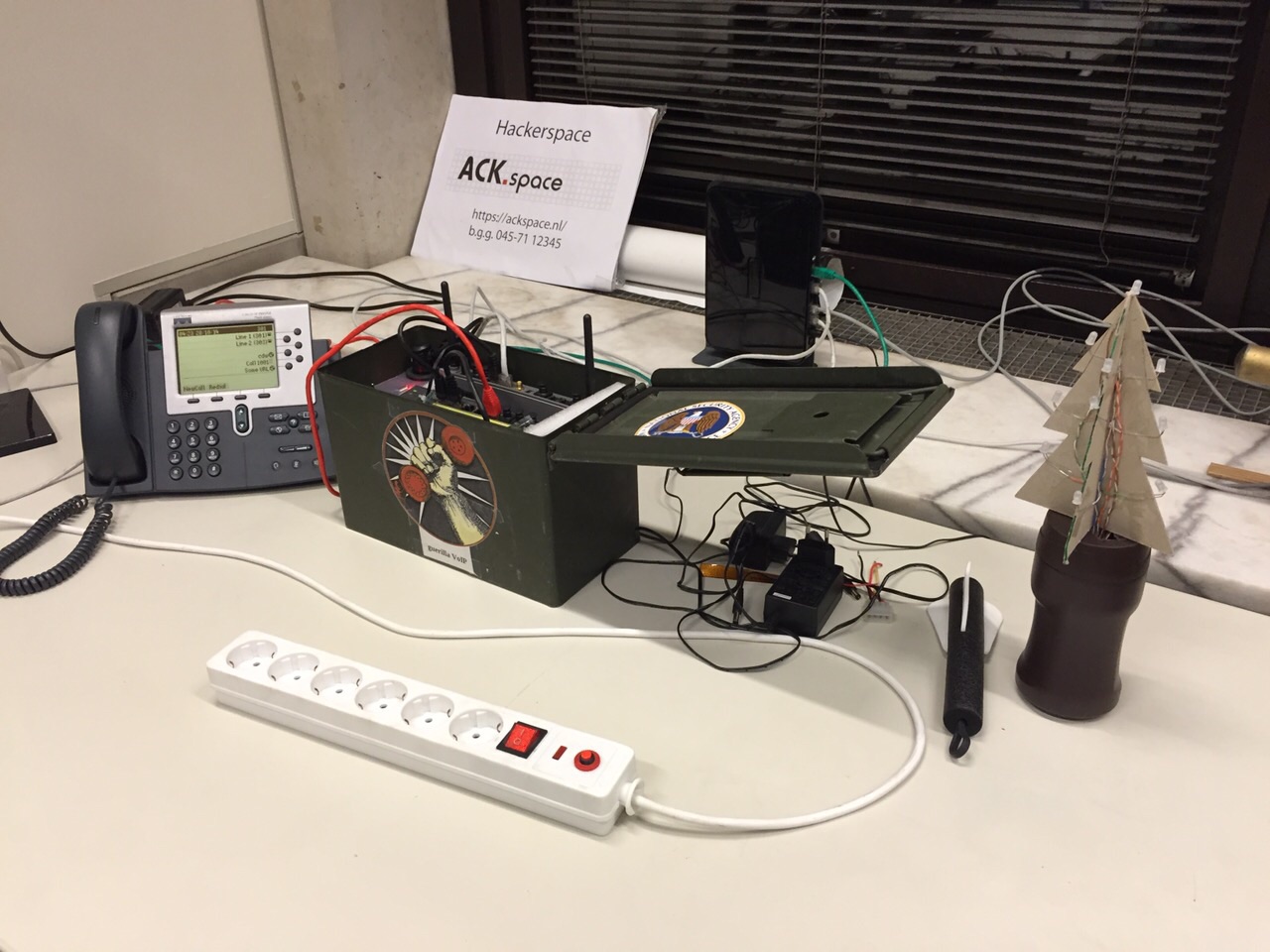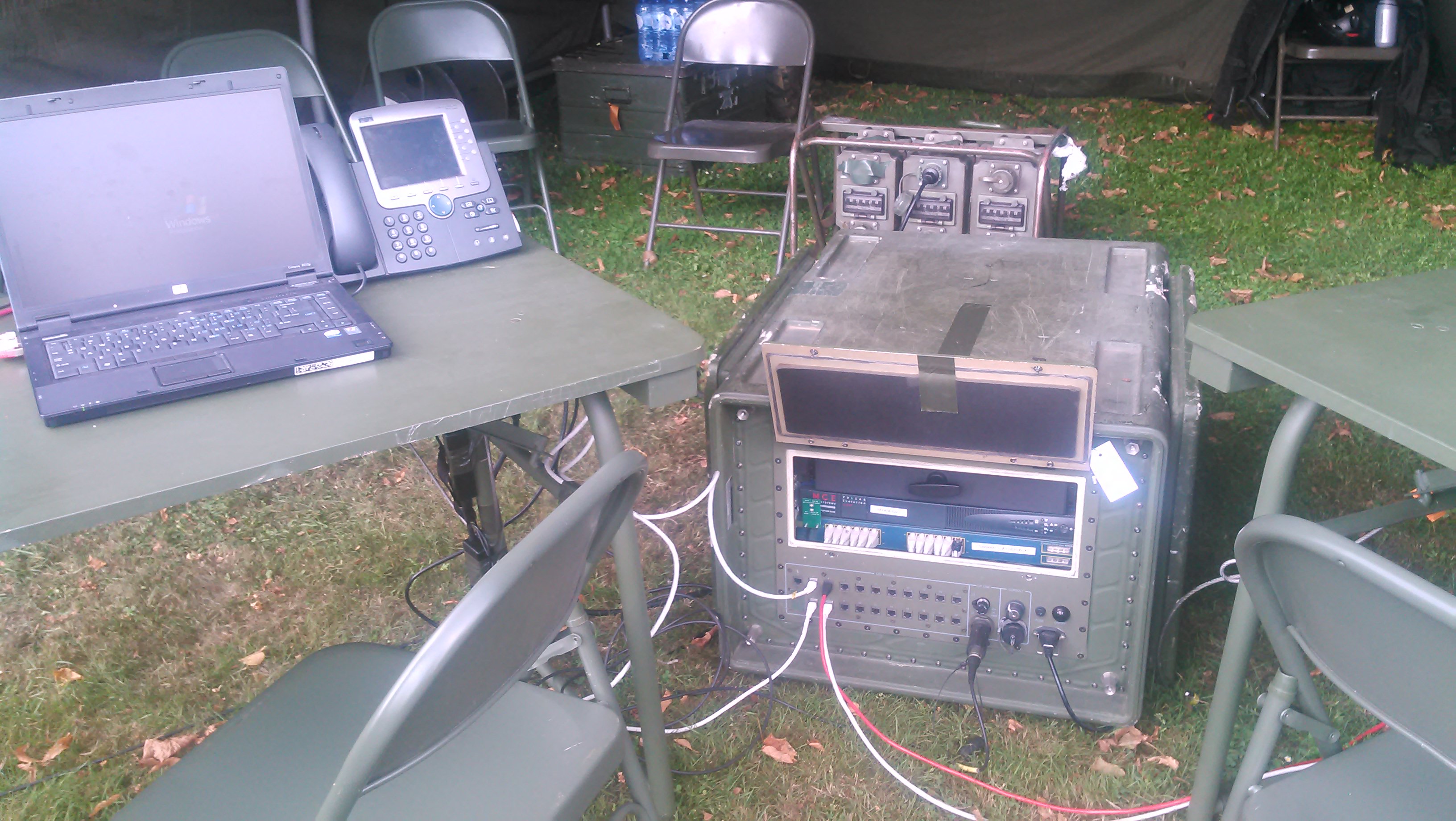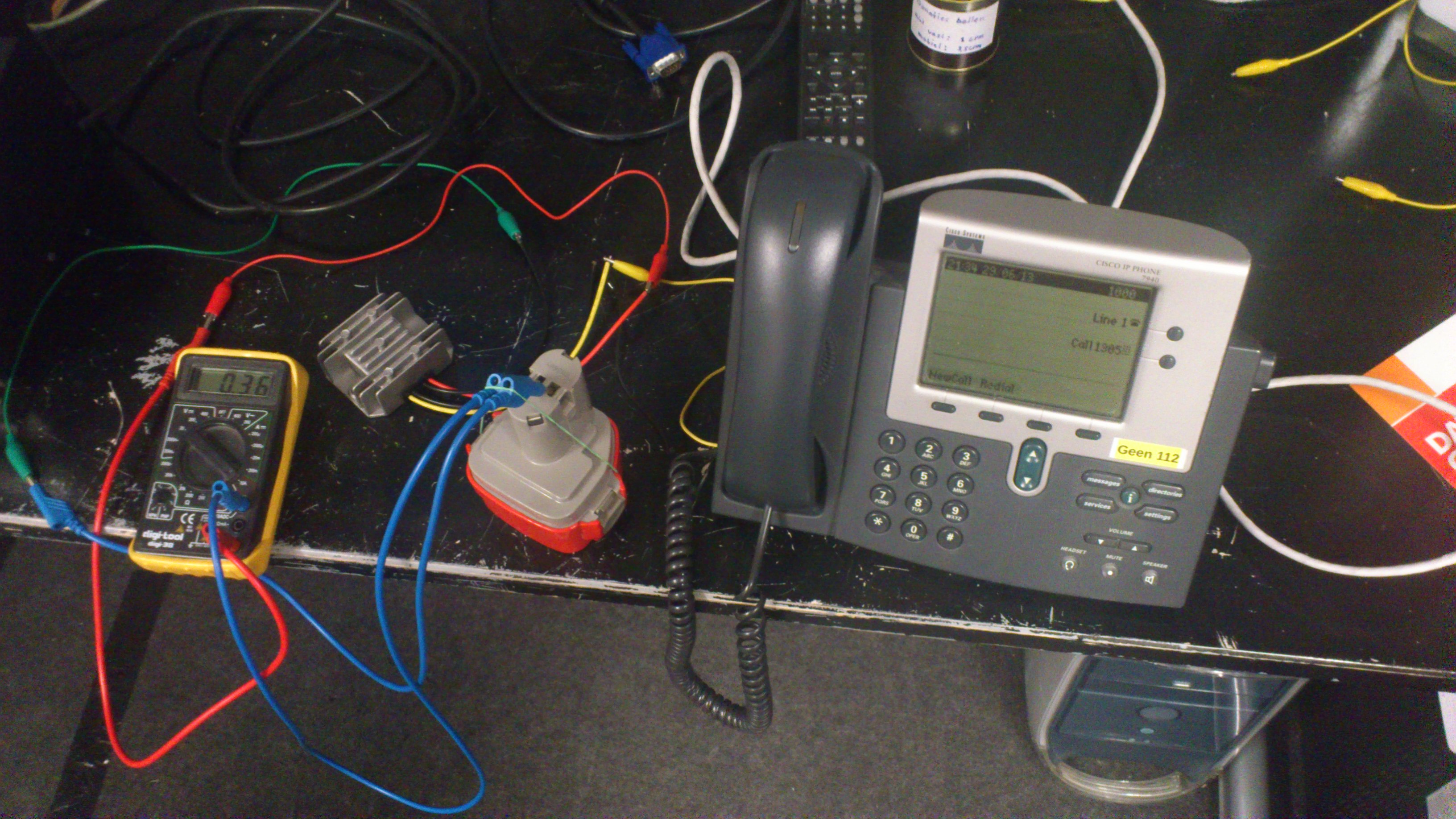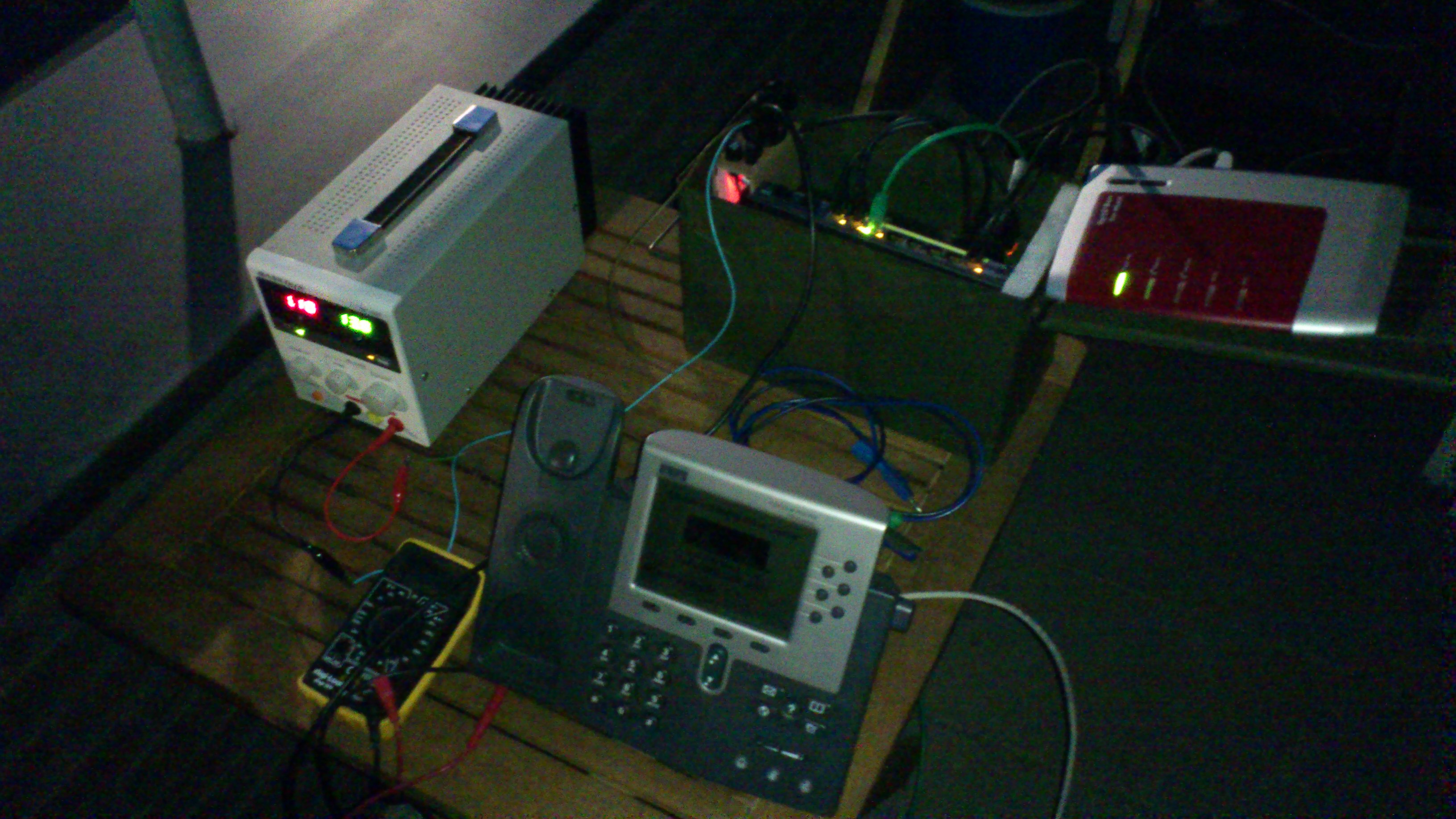Difference between revisions of "Guerrilla VoIP"
(reorganised some stuff, started to look messy, added VLAN info on the side) |
(added images) |
||
| Line 18: | Line 18: | ||
* Efficient power converter(s) when running on battery | * Efficient power converter(s) when running on battery | ||
* sturdy compact waterproof casing | * sturdy compact waterproof casing | ||
| + | |||
| + | <gallery> | ||
| + | image:guerilla_voip_in_use.jpg|Guerilla VoIP in active use (as a temporary set up of the space phone) | ||
| + | image:guerilla_voip_big_big brother.jpg|After my setup was running, I came across a real world example: a defense set-up. I found the similarities hillarious. | ||
| + | </gallery> | ||
=== prototyping === | === prototyping === | ||
Revision as of 20:24, 23 January 2015
| Project: Guerrilla VoIP | |
|---|---|
| Featured: | |
| State | Active |
| Members | xopr |
| GitHub | No GitHub project defined. Add your project here. |
| Description | low cost communication node |
| Picture | |
| No project picture! Fill in form Picture or Upload a jpeg here | |
synopsis
Create a low cost communication node (with VoIP as a base), trying to connect as many as possible types of links, for example:
- copper/fibre/WiFi network
- DECT/POTS telephony
- SIP/SCCP
- HAM radio (or preferrably, CB radio: 27MC/PMR)
- copper/WiFi/USB uplink
It also could need some of the following functionality:
- PoE service (to drive phones, remote switches/accesspoints)
- battery supported/powered (in case of power failures/lack of power)
- Efficient power converter(s) when running on battery
- sturdy compact waterproof casing
prototyping
So to make the first prototype, I chose the following:
- ammo box
- 7Ah battery
- step-down converter 12->5V
- step-up converter 12v->48V
- Fritz!Box 7270 (NAT, FxS, FxO, DECT)
- two Raspberry Pis running FreeSWITCH (external queue, internal SCCP server), DHCP and TFTP
- Netgear GS110TP (8xPoE + 2xSFP)
Some power tests
| hardware | power source | U | I |
|---|---|---|---|
| Two Raspberry Pis, step down | drill battery pack | 12V | 330mA |
| Cisco CP7940, step up | drill battery pack | 12V | 360mA - 450mA |
| Fritz!box (wifi off), direct | lab power supply | 12V | 360mA (idle) - 440mA (42% - 52%, top ~880mA) |
| 15V | 250mA (idle) | ||
| Netgear GS110TP PoE, step up | lab power supply | 12V | 330mA |
| Netgear GS110TP PoE + Cisco CP7940, step up |
lab power supply | 12V | 740mA |
| Complete set: 2 RasPis, Fritz!box, switch, phone + cellphone charging |
lab power supply | 12V | 2000mA |
| 13.8V | 1600mA |
interesting facts
- Fritz!box has a switching regulator to 5V tested between 5.5V and 15V (drops off at 5.3V idle and elco at power supply segment is rated 16V)
- PoE hack adapter connected pin 1 (white-orange) and pin 3 (white-green) with 22K resistor.
- if the pre-standard CP-79x0 is connected using the PoE adapter hack, the Netgear GS110TP doesn't power, when you unplug it, it will enable power within 5 seconds; plug in, and the phone boots.
- if you configure the administrative VLAN, the phone will fetch a DHCP lease on that VLAN, allowing you to seperately set up dnsmasq on a Raspberry Pi
done
- the first version works, but still needs some manual labor
- Telephone system:Cisco PoE hack cable
- Cisco NL dialplan
- tested with battery; float charging device still has to be made (haven't measured how long it would run on a single charge though, but enough time to do some important phone calling)
todo
- work out 'modus operandi': multiple config files switchable by phone
- work on dual linux config with GPIO hardware switch
- test the fibre ports
- add homeplug as a proof of concept
- design and create (or buy) small-sized float charger (13.8V 2A) with overcurrent protection, if needed



